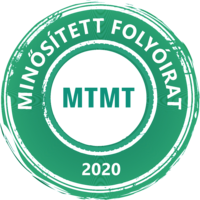Elemental Analysis of Contaminated Biomass Ashes for Phytomining of Rare Earth Elements
DOI:
https://doi.org/10.14232/analecta.2023.3.26-32Keywords:
biomass, elemental analysis, phytomining, rare earth elementsAbstract
Phytomining of rare earth elements (REEs) provides a potential possibility for metal recovery at brownfields where conventional mining technique is not reasonable or profitable. The holistic concept of phytomining is instituted from three scientific sectors. Phytoextraction is the first stage referred to accumulation of REEs in plants. This is followed by the enrichment process aiming to elevate metal concentration into solid remains. Eventually, extraction technology is applied to reclaim these valuable metals from the bio-ores. The main goal of this study is to identify a possible location for REEs phytomining, which lays the groundwork for further investigations. To do that, different woody biomass from disparate contaminated spots was harvested and examined. A brownfield land located in Gyöngyösoroszi, Hungary has been selected based on the elemental analysis of ash samples obtained from the incineration of the collected plants at 500 °C. The outcomes also preliminarily indicate the viability of phytomining in recovering REEs.
Downloads
References
D. Schüler, M. Buchert, R. Liu, S. Dittrich, and C. Merz, “Study on rare earths and their recycling,” Öko-Institut eV Darmstadt, vol. 49, pp. 30–40, 2011.
V. Balaram, “Rare earth elements: A review of applications, occurrence, exploration, analysis, recycling, and environmental impact,” Geosci. Front., vol. 10, no. 4, pp. 1285–1303, Jul. 2019, doi: 10.1016/j.gsf.2018.12.005.
X. Pang, D. Li, and A. Peng, “Application of rare-earth elements in the agriculture of china and its environmental behavior in soil,” J. Soils Sediments, vol. 1, no. 2, pp. 124–129, Jun. 2001, doi: 10.1007/BF02987718.
K. Redling, “Rare earth elements in agriculture with emphasis on animal husbandry.” lmu, 2006.
A. van der Ent, A. J. M. Baker, R. D. Reeves, A. J. Pollard, and H. Schat, “Hyperaccumulators of metal and metalloid trace elements: Facts and fiction,” Plant Soil, vol. 362, no. 1–2, pp. 319–334, 2013, doi: 10.1007/s11104-012-1287-3.
A. Sas-Nowosielska, R. Kucharski, E. Małkowski, M. Pogrzeba, J. M. Kuperberg, and K. Kryński, “Phytoextraction crop disposal - An unsolved problem,” Environ. Pollut., vol. 128, no. 3, pp. 373–379, 2004, doi: 10.1016/j.envpol.2003.09.012.
H. Kovacs and K. Szemmelveisz, “Disposal options for polluted plants grown on heavy metal contaminated brownfield lands – A review,” Chemosphere, vol. 166, pp. 8–20, 2017, doi: 10.1016/j.chemosphere.2016.09.076.
M. Wang, Q. Tan, J. F. Chiang, and J. Li, “Recovery of rare and precious metals from urban mines—A review,” Front. Environ. Sci. Eng., vol. 11, no. 5, pp. 1–17, 2017, doi: 10.1007/s11783-017-0963-1.
B. Jally, B. Laubie, Y.-T. Tang, and M.-O. Simonnot, “Processing of Plants to Products: Gold, REEs and Other Elements,” 2021, pp. 63–74. doi: 10.1007/978-3-030-58904-2_4.
R. L. Chaney, “Phytoextraction and phytomining of soil nickel,” in Nickel in Soils and Plants, CRC Press, 2018, pp. 341–374.
X. Zhang, V. Houzelot, A. Bani, J. L. Morel, G. Echevarria, and M.-O. Simonnot, “Selection and Combustion of Ni-Hyperaccumulators for the Phytomining Process,” Int. J. Phytoremediation, vol. 16, no. 10, pp. 1058–1072, Oct. 2014, doi: 10.1080/15226514.2013.810585.
B. Laubie, J. Vaughan, and M.-O. Simonnot, “Processing of Hyperaccumulator Plants to Nickel Products BT - Agromining: Farming for Metals: Extracting Unconventional Resources Using Plants,” A. van der Ent, A. J. M. Baker, G. Echevarria, M.-O. Simonnot, and J. L. Morel, Eds. Cham: Springer International Publishing, 2021, pp. 47–61. doi: 10.1007/978-3-030-58904-2_3.
A. Tognacchini et al., “Agromining from Secondary Resources: Recovery of Nickel and Other Valuable Elements from Waste Materials BT - Agromining: Farming for Metals: Extracting Unconventional Resources Using Plants,” A. van der Ent, A. J. M. Baker, G. Echevarria, M.-O. Simonnot, and J. L. Morel, Eds. Cham: Springer International Publishing, 2021, pp. 299–321. doi: 10.1007/978-3-030-58904-2_14.
R. D. Reeves, A. J. M. Baker, T. Jaffré, P. D. Erskine, G. Echevarria, and A. Ent, “A global database for plants that hyperaccumulate metal and metalloid trace elements,” New Phytol., vol. 218, no. 2, pp. 407–411, Apr. 2018, doi: 10.1111/nph.14907.
A. Bani, G. Echevarria, S. Sulçe, and J. L. Morel, “Improving the Agronomy of Alyssum murale for Extensive Phytomining: A Five-Year Field Study,” Int. J. Phytoremediation, vol. 17, no. 2, pp. 117–127, Feb. 2015, doi: 10.1080/15226514.2013.862204.
X. Zhang, B. Laubie, V. Houzelot, E. Plasari, G. Echevarria, and M.-O. Simonnot, “Increasing purity of ammonium nickel sulfate hexahydrate and production sustainability in a nickel phytomining process,” Chem. Eng. Res. Des., vol. 106, pp. 26–32, Feb. 2016, doi: 10.1016/j.cherd.2015.12.009.
T. Dinh, Z. Dobo, and H. Kovacs, “Phytomining of noble metals – A review,” Chemosphere, vol. 286, p. 131805, Jan. 2022, doi: 10.1016/j.chemosphere.2021.131805.
W. M. Haynes, CRC Handbook of Chemistry and Physics. CRC Press, 2016. [Online]. Available: https://books.google.hu/books?id=VVezDAAAQBAJ
B. D. Krisnayanti, C. W. N. Anderson, S. Sukartono, Y. Afandi, H. Suheri, and A. Ekawanti, “Phytomining for artisanal gold mine tailings management,” Minerals, vol. 6, no. 3, pp. 1–11, 2016, doi: 10.3390/min6030084.
A. E. Lamb, C. W. N. Anderson, and R. G. Haverkamp, “The extraction of gold from plants and its application to phytomining,” 2001.
M. Yuan et al., “Accumulation and fractionation of rare earth elements (REEs) in the naturally grown Phytolacca americana L. in southern China,” Int. J. Phytoremediation, vol. 20, no. 5, pp. 415–423, Apr. 2018, doi: 10.1080/15226514.2017.1365336.
W. Zhenggui et al., “Rare earth elements in naturally grown fern Dicranopteris linearis in relation to their variation in soils in South-Jiangxi region (Southern China),” Environ. Pollut., vol. 114, no. 3, pp. 345–355, 2001, doi: 10.1016/S0269-7491(00)00240-2.
L. Miao, Y. Ma, R. Xu, and W. Yan, “Environmental biogeochemical characteristics of rare earth elements in soil and soil-grown plants of the Hetai goldfield, Guangdong Province, China,” Environ. Earth Sci., vol. 63, no. 3, pp. 501–511, 2011, doi: 10.1007/s12665-010-0718-9.
X. Xu, W. Zhu, Z. Wang, and G. J. Witkamp, “Distributions of rare earths and heavy metals in field-grown maize after application of rare earth-containing fertilizer,” Sci. Total Environ., vol. 293, no. 1–3, pp. 97–105, 2002, doi: 10.1016/S0048-9697(01)01150-0.
H. Kovacs, O. Bánhidi, and K. Veisz, “Distribution of chemical elements within ligneous parts of various trees,” Mater Sci Eng, vol. 36, pp. 41–50, Jan. 2011.
S. M. Ding, T. Liang, J. C. Yan, Z. L. Zhang, Z. C. Huang, and Y. N. Xie, “Fractionations of rare earth elements in plants and their conceptive model,” Sci. China, Ser. C Life Sci., vol. 50, no. 1, pp. 47–55, 2007, doi: 10.1007/s11427-007-2040-7.
Downloads
Published
How to Cite
Issue
Section
License
Copyright (C) 2024 Authors
This work is licensed under a Creative Commons Attribution 4.0 International License.
Funding data
-
Innovációs és Technológiai Minisztérium
Grant numbers NKFIH-846-8/2019 -
Nemzeti Kutatási, Fejlesztési és Innovaciós Alap
Grant numbers TKP-17-1/PALY-2020













